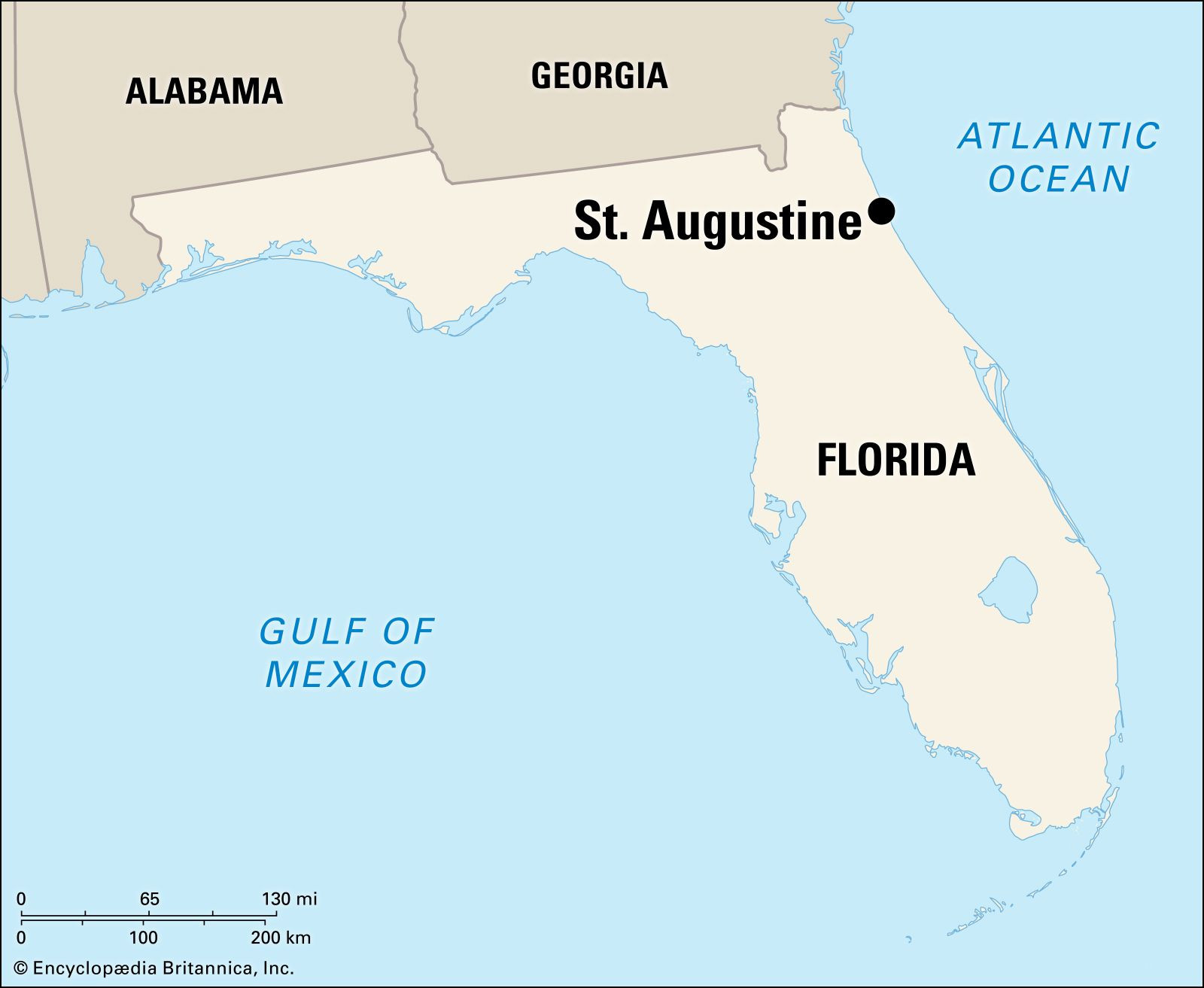St. Augustine, Florida, a city steeped in history and brimming with coastal charm, holds the distinguished title of the oldest continuously inhabited European-established settlement in the United States. But where is St. Augustine, Florida exactly? Nestled in the northeastern part of the Sunshine State, St. Augustine is strategically positioned in St. Johns County, offering a unique blend of historical significance and natural beauty.
This captivating city graces a peninsula bordered by the San Sebastian River to the west and the Matanzas River to the east. Its location extends onto the mainland west of the San Sebastian River, placing it conveniently along the Atlantic coast and the Intracoastal Waterway. For those seeking geographical context within Florida, St. Augustine is located approximately 40 miles (65 km) southeast of Jacksonville, a major urban center in the region.
 Aerial view of St. Augustine Florida peninsula surrounded by San Sebastian and Matanzas rivers
Aerial view of St. Augustine Florida peninsula surrounded by San Sebastian and Matanzas rivers
The story of St. Augustine is deeply intertwined with its strategic location. The Spanish explorer Juan Ponce de León first set foot here in 1513, claiming the land for Spain. However, it was in 1565 that St. Augustine was officially founded by Pedro Menéndez de Avilés. This Spanish settlement was established to secure Spain’s claim to Florida and counter French presence in the region, making its location paramount for colonial power. For over two centuries, except for a brief British period (1763-1783), St. Augustine served as a crucial northern outpost of the vast Spanish colonial empire.
 Romanticized artist rendering of St. Augustine Florida in 1671 showing colonial era buildings and ships
Romanticized artist rendering of St. Augustine Florida in 1671 showing colonial era buildings and ships
The legacy of its past is vividly preserved in landmarks like the Castillo de San Marcos. This imposing fortress, constructed between 1672 and 1695, stands as the oldest masonry fort in the United States and a testament to the city’s enduring historical importance. Its strategic placement at the southern tip of the peninsula underscores the significance of St. Augustine’s geography for defense and control throughout history. The city has witnessed historical events from Sir Francis Drake’s raid in 1586 to sieges and occupations during various conflicts, each event further cementing its place in American history.
Today, St. Augustine thrives as a popular tourist destination, drawing visitors with its rich history, charming historic district, and coastal appeal. The city’s economy is diversified, encompassing tourism, services, and industries like aircraft modification and boat manufacturing, alongside commercial fishing. Institutions like Flagler College, with its stunning historic architecture, add to the city’s unique character. Located on Anastasia Island, just southeast of the city, are natural attractions like Anastasia State Recreation Area and Fort Matanzas National Monument, further enhancing St. Augustine’s appeal as a place of historical and natural interest.
In conclusion, St. Augustine, Florida, is strategically located in northeastern Florida, south of Jacksonville, nestled between the San Sebastian and Matanzas Rivers, and bordering the Atlantic Intracoastal Waterway. Its geographical position has been central to its historical significance as the oldest continuously settled city in the USA, shaping its development from a Spanish colonial outpost to a vibrant modern city with a deep connection to the past. Exploring St. Augustine is not just visiting a place; it’s stepping into a living history book in a beautiful coastal setting.

